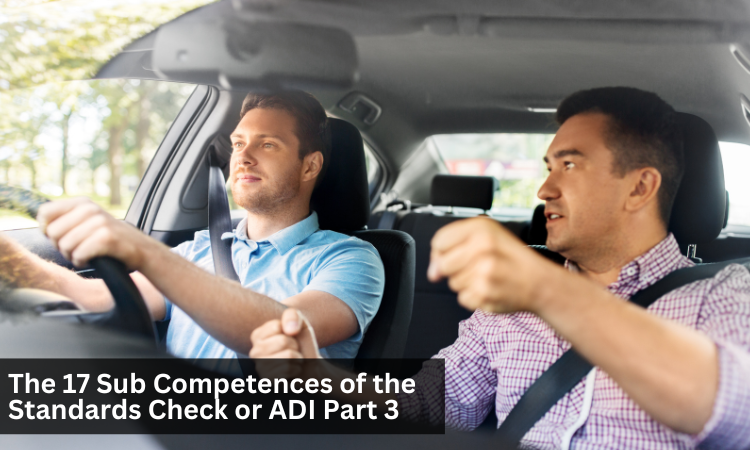
Breaking down the ADI Part 3 / Standards Check
Hi, this is my seventh instalment on the 17 sub competences of the standards check or ADI part 3. Today I am going to give you my interpretation of,” Was the trainer aware of the surroundings and pupil’s actions”? Under the heading of risk management.
This sub competency in my humble opinion is the most important of all of them. The ADI 1 states that the ADI/ PDI 1/should be able to take in the outside world, 2/ observe the actions, including comments and body language, judging whether those actions are suitable in any given situation and 3/respond. Also, it states, “Any serious lapses in this area are likely to lead to a 0 marking”.
Ok, let’s explain this sub competency in detail. You need to be observant and aware of what is happening in short, medium, long distance to the sides and behind your vehicle at all times. This skill is critical in keeping the vehicle safe as if you don’t see or anticipate what is going to happen then how can you instruct or prompt your pupil to do next. It’s more important to see hazards or dangers earlier as an untrained or inexperienced driver takes longer to respond to your instruction and prompts.
The ADI part 2 is useful to develop these key awareness skills, but if they need to be developed further by using scanning techniques and using a planned system of driving you might consider completion of an advanced driving qualification that uses the Road-craft system of driving.
The second important element of this sub competency is observing your pupil. Ok, this would be shared with your observation of your surroundings, the key is when should you be watching your pupils. On approach to a junction, to turn right, when you give to instruction to your pupil to turn right you should be watching your pupils eyes first( mirrors), then their hands( signals),
Outside the vehicle( to check position), their feet/ hands ( to see how they are slowing down & their gear change), their eyes( look) and finally their hands to see how they are steering. With experience you can tell how your pupil is slowing down as you feel the vehicle. The best practice is for expect the pupil to follow the actions that you would make and to observe them taking these actions. The amount of time you observe your pupil also depends on the level of risk of a developing hazard ahead, as you don’t want to be watching your pupil and miss the danger ahead of you.
Also, you should be observant of your pupil’s body language and facial expressions as they could be expressing anxiety or frustration with any aspect of the lesson and you will have to help your pupil to overcome these barriers or find out why they are anxious or frustrated, so learning can be more effective.
Interested in becoming a driving instructor? Get in touch here.
